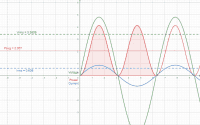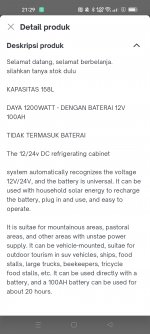Hi all,
Is there a difference between DC Power and AC Power?
For example, a DC appliance of 1200 Watt is that the same power as an AC appliance of 1200 Watt?
Why am I asking?
I've seen an DC Freezer 12/24 volt but 1200Watt. They claim it can be used in Off Grid situations.
But wowwww 1200 Watt for a freezer isn't that huge ?
I see AC Freezer from 300 to 700Watt
Why should you use an 1200 Watt 12V Freezer?
Thx
Regards
Ben
Is there a difference between DC Power and AC Power?
For example, a DC appliance of 1200 Watt is that the same power as an AC appliance of 1200 Watt?
Why am I asking?
I've seen an DC Freezer 12/24 volt but 1200Watt. They claim it can be used in Off Grid situations.
But wowwww 1200 Watt for a freezer isn't that huge ?
I see AC Freezer from 300 to 700Watt
Why should you use an 1200 Watt 12V Freezer?
Thx
Regards
Ben



